I know this isn’t the best way to begin an article in which I try to persuade people that a place is worth visiting, but I should be honest. Traveling on the train or driving on Freeway 3, I must have passed through Jhutian (竹田) a dozen times before it left any impression on me. This rural township in the heart of Pingtung County has no beaches or mountains. In between groves of betel nut, there are lemon orchards and fields in which adzuki beans are cultivated.
According to an ethnicity map in the Taiwan Hakka Museum (臺灣客家文化館) in Miaoli County, Jhutian is the only township in Pingtung where more than 70 percent of the population is Hakka. During the long reign of Qing Emperor Kangxi (康熙, 1661 to 1722), Hakka pioneers began reshaping the landscape to boost agricultural productivity.
Of the six local militias that protected Hakka settlements in southern Taiwan during the tumult of the 18th and 19th centuries, the one associated with Jhutian is said to be the oldest. In English, these self-defense groups are often referred to as the Liudui (六堆, literally “six heaps”). Jhutian was the “middle heap” (中堆).
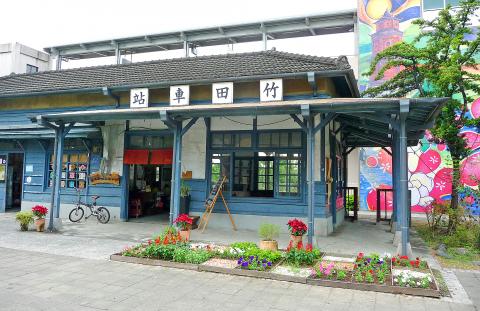
Photo: Steven Crook
Being flat — and thinly populated by the standards of Taiwan’s lowlands — Jhutian is perfect for exploring by pedal power. If you bring your own bike, be aware that you can detrain at Jhutian, but bicycles cannot be loaded there. When leaving, you’ll need to board at Xishi (西勢) or Chaozhou (潮州).
Bikes suitable for short-distance touring can be rented (NT$100/2 hours on weekends; all day on weekdays) from the coffee-and-souvenirs business that occupies the old railway station. The new station, which was opened in 2015, looms over the 1919 original. Like many stations constructed during the Japanese colonial period, the latter is a single-story structure that incorporates a good amount of wood.
A couple of minor relics stand preserved a few meters away: An old bathhouse; and, beside it, the well from which begrimed railway employees had to draw water before washing.
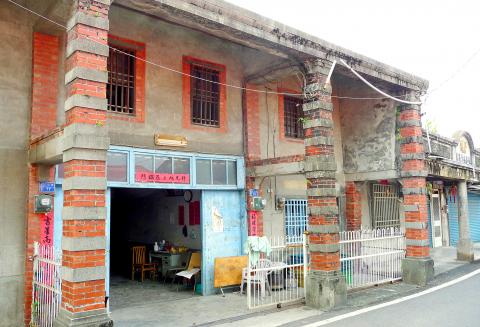
Photo: Steven Crook
If you approach the town from the north, the first point of interest is the Zhang Wan-san Ancestral Shrine (張萬三祖祠). Chang Wan-san (張萬三) moved from China to Jhutian during the reign of Emperor Qianlong (乾隆, 1735 to 1796). According to the township office’s Web site, the hall in which he’s venerated by his descendants is open to the public. When I visited, however, it wasn’t possible to get on the grounds, let alone into the building. Even so, it’s a strikingly photogenic example of traditional architecture.
The Chang Wan-san Ancestral Shrine is near the northern end of Sanshan Road (三山路), the town’s most interesting thoroughfare. This road name, unique within Taiwan as far as I can tell, does not describe local topography (sanshan can be read as “three mountains”) but is instead a reference to the temple at number 63.
The Three Mountain Kings Temple (三山國王廟) is devoted to the spiritual rulers of three peaks in China. Non-Hakka seldom pray to this trio of deities, yet shrines that honor them can be found even in places like Changhua County’s Lukang (鹿港), where Hakka people are a small minority.
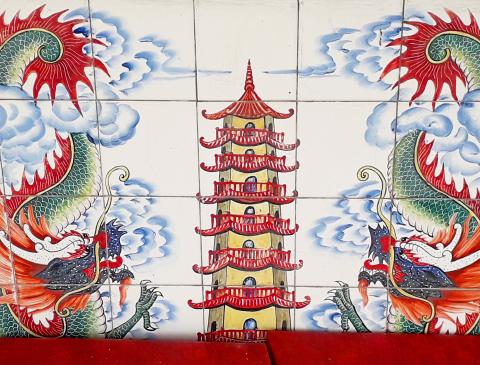
Photo: Steven Crook
Numbers 144 to 168 have been assigned to parts of a residential compound belonging to the extended Chen (陳) family. Most of the subdivisions still have traditional tiled roofs, but one has sprouted a second floor. The state of the numbered sections gives an idea, perhaps, of how some branches of the family have prospered more than others, or which property owners now live far away and seldom return.
The building at the center, the clan’s ancestral shrine, is left unlocked during the hours of daylight, a resident told me.
Japanese-era infrastructure and ancestral shrines aren’t uncommon in Taiwan; something more unusual lies 1.2km southwest of the train station. The Tiaodi Village Words-Worshipping Oblation Furnace (糶糴村敬字亭) is evidence of a custom that was practiced until fairly recently in many parts of the Sinosphere, but which appears to have been especially strong in Hakka villages.
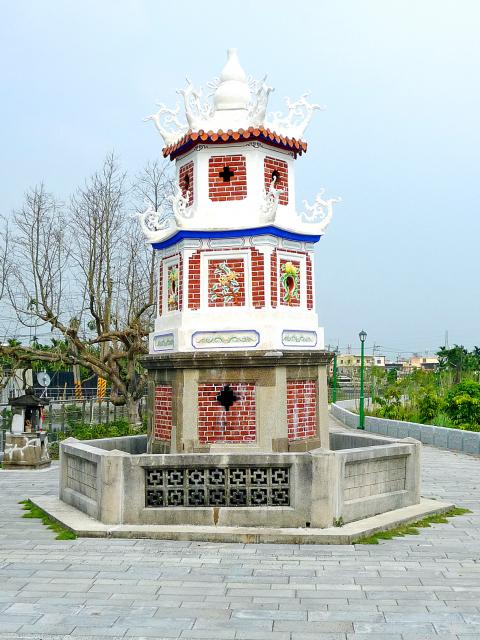
Photo: Steven Crook
Reflecting a deep reverence for learning and literacy, any scraps of paper on which words had been written or printed were picked up, placed in special baskets, then carried to a special furnace for destruction.
Traditional Han communities had very few of the voluntary non-kinship groups we find in free, affluent societies like 21st-century Taiwan. The only exceptions, according to Americans and Chinese: Passage to Differences by Francis Hsu (許烺光), were groups that promoted teetotalism, provided free coffins to the indigent and “hired men to roam the streets [who] collected any piece of waste bearing written characters in the gutter or on the ground and burned what they collected at the end of the day in the specially provided urn in the local Confucian temple.”
Tiaodi Village’s oblation furnace is easy to find if you take Sanmin Road (三民路) southwest from the downtown, then turn right onto Sanhe Road (三和路). After less than 150m, look left and you’ll see the tower-like furnace beside a large sluice gate. It’s about six meters in height, and leans noticeably toward the waterway.
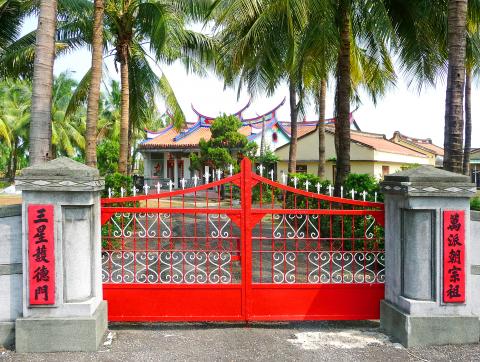
Photo: Steven Crook
The current furnace is thought to have been built around 1930. Thanks to a thorough renovation earlier this year, the site is now a pleasant picnic spot.
Given its laid-back character and appealing rural setting, it’s surprising that Jhutian hasn’t been mentioned as a candidate for slow-city status. Within Taiwan, four communities have already been recognized as “slow cities” by Cittaslow International, the Italy-based network that connects more than 200 towns across the world.
Only towns with fewer than 50,000 residents can apply (Jhutian has around 17,000). More importantly, they should be towns where people “are still curious of the old times… [and] still able to recognize the slow course of the seasons and genuine products respecting tastes, health and spontaneous customs.”
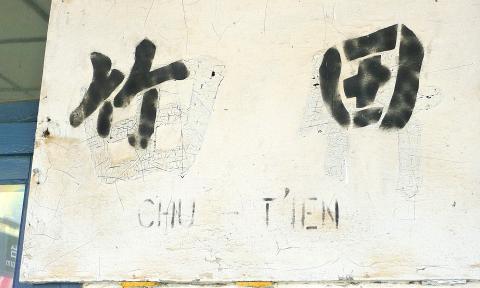
Photo: Steven Crook
That sounds like Jhutian to a tee.
Steven Crook has been writing about travel, culture, and business in Taiwan since 1996. Having recently co-authored A Culinary History of Taipei: Beyond Pork and Ponlai, he is now updating Taiwan: The Bradt Travel Guide.
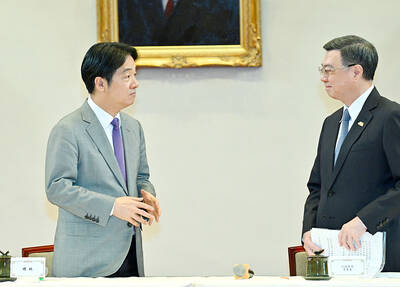
Under pressure, President William Lai (賴清德) has enacted his first cabinet reshuffle. Whether it will be enough to staunch the bleeding remains to be seen. Cabinet members in the Executive Yuan almost always end up as sacrificial lambs, especially those appointed early in a president’s term. When presidents are under pressure, the cabinet is reshuffled. This is not unique to any party or president; this is the custom. This is the case in many democracies, especially parliamentary ones. In Taiwan, constitutionally the president presides over the heads of the five branches of government, each of which is confusingly translated as “president”
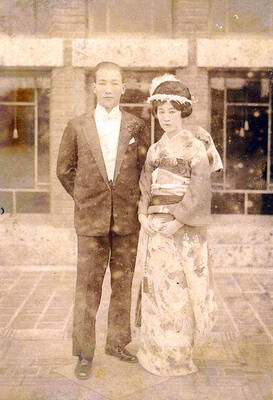
Sept. 1 to Sept. 7 In 1899, Kozaburo Hirai became the first documented Japanese to wed a Taiwanese under colonial rule. The soldier was partly motivated by the government’s policy of assimilating the Taiwanese population through intermarriage. While his friends and family disapproved and even mocked him, the marriage endured. By 1930, when his story appeared in Tales of Virtuous Deeds in Taiwan, Hirai had settled in his wife’s rural Changhua hometown, farming the land and integrating into local society. Similarly, Aiko Fujii, who married into the prominent Wufeng Lin Family (霧峰林家) in 1927, quickly learned Hoklo (commonly known as Taiwanese) and

The Venice Film Festival kicked off with the world premiere of Paolo Sorrentino’s La Grazia Wednesday night on the Lido. The opening ceremony of the festival also saw Francis Ford Coppola presenting filmmaker Werner Herzog with a lifetime achievement prize. The 82nd edition of the glamorous international film festival is playing host to many Hollywood stars, including George Clooney, Julia Roberts and Dwayne Johnson, and famed auteurs, from Guillermo del Toro to Kathryn Bigelow, who all have films debuting over the next 10 days. The conflict in Gaza has also already been an everpresent topic both outside the festival’s walls, where

The low voter turnout for the referendum on Aug. 23 shows that many Taiwanese are apathetic about nuclear energy, but there are long-term energy stakes involved that the public needs to grasp Taiwan faces an energy trilemma: soaring AI-driven demand, pressure to cut carbon and reliance on fragile fuel imports. But the nuclear referendum on Aug. 23 showed how little this registered with voters, many of whom neither see the long game nor grasp the stakes. Volunteer referendum worker Vivian Chen (陳薇安) put it bluntly: “I’ve seen many people asking what they’re voting for when they arrive to vote. They cast their vote without even doing any research.” Imagine Taiwanese voters invited to a poker table. The bet looked simple — yes or no — yet most never showed. More than two-thirds of those